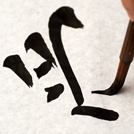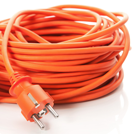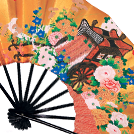|
Tokyo, Japan
 Value Added Tax
Value Added Tax
➤ Japan does not have VAT, but does have an 8-percent Consumption Tax (aka Goods and Service Tax) that may be raised to 10 percent in 2018.
➤ U.S. exhibitors with no local office may apply for a Consumption Tax exemption directly from the Japanese government.
➤ Japan participates in the ATA Carnet program.
 Voltage
Voltage
➤ Japanese convention centers operate on 100 volts.
➤ Two-blade, U.S.-style electrical plugs are used. You may also request ground pin (earth) outlets.
➤ You may need to use transformers for sensitive electrical equipment.
 Garbage
Garbage
➤ The stand builder is responsible for the removal of all trash generated during setup.
➤ Exhibitors must order cleaning services from the official supplier, which typically includes garbage disposal and vacuuming during the full run of the show.
➤ If you need to dispose of your booth, contract for that prior to arriving at the show, either with organizers or your stand builder.
 Cellphones
Cellphones
➤ Many U.S. cellphones will work in Japan, but charges for calls and data services vary widely.
➤ If you need to buy SIM cards or rent cellphones or mobile hot spots, do so from carriers in the arrival lobbies of the Narita and Haneda airports.
 Shipping
Shipping
➤ Airfreight from the United States to Tokyo will take five to 10 days, including customs clearance. Ocean shipments can take between three and seven weeks.
➤ Make sure all paperwork is correct, and be sure to include photos of all items in the shipment, as well as information regarding how they will be used.
➤ All exhibit materials imported into Japan must be fire retardant.
➤ It is best to use a freight forwarder, logistics company, or the show's official shipping agent when sending goods to Tokyo.
 Payments
Payments
➤ Many U.S. cellphones will work in Japan, but charges for calls and data services vary widely.
➤ If you need to buy SIM cards or rent cellphones or mobile hot spots, do so from carriers in the arrival lobbies of the Narita and Haneda airports.
➤ Many on-site service providers require cash payments. Alternately, you may ask your exhibit house to pay such fees and invoice you at a later date.
Greetings and Culture

➤ Punctuality is very important. Arriving five minutes early is considered cutting it close. Thus, keeping appointments or providing early notification of changes is crucial.
➤ Make sure you have plenty of business cards. Present the card with your palms facing up, and treat the cards you receive with respect. Try to keep your cards in a front pocket or purse, as pulling a business card from a back pocket – or placing a card you have received in your back pocket – is seen as disrespectful.
➤ Foreigners need not bow when greeting. Instead, smile and offer a handshake. Avoid overpowering handshakes, as Japanese people perceive this as a sign of lesser intelligence.
Hospitality

➤ Catering, even of nonalcoholic beverages, is relatively rare at Japanese trade shows aside from uniquely international events in the automotive, aerospace, and oil/gas industries that attract a range of global attendees. While some exhibitors may serve nonperishable snacks, many attendees do not expect to be fed while visiting exhibits.
➤ Although there are no rules against serving alcohol on the show floor, it is generally not done.
➤ Setting up a full-scale kitchen in an exhibit is rare in Japan because of the high cost of plumbing connections compared to other countries and the lack of raised flooring.
Language

➤ Some attendees speak English, but having someone on hand who speaks Japanese is a must. Even Japanese people who speak English often feel much more comfortable entering an exhibit if they know a translator is available. Positioning a Japanese staffer at the entrance to your booth is one solution.
➤ Graphics and literature should be available in both English and Japanese.
➤ If you plan to do business in Japan on a consistent basis, invest in business cards with English on one side and Japanese on the other side.
Staff Attire

➤ Business suits (or slacks and sport coats) are the norm for men. Short-sleeved business shirts during the hot summer months are becoming more acceptable.
➤ Japanese businesswomen typically wear dark dress pants or skirts with white or light-colored blouses and low-heeled shoes on the trade show floor.
Installation and Dismantle

➤ If you are using a local exhibit house, it will provide you with an I&D crew.
➤ While there are no unions, labor generally works from 9 a.m. to 5:30 p.m., with an overtime rate (typically 1.25 times normal rates) beginning thereafter.
➤ You can set up your booth yourself except for technical electrical work, which must be done by a licensed contractor and ordered from show services.
➤ Note that electrical connections in Japan are done by "hard wiring" fixtures and outlets. If you order power, you'll find a distribution box in your booth â?" not the end of an extension cord like in the United States.
➤ In Japan, PVC banner applications are more common than tensioned fabrics. Also, U.S.-made fabrics that have European and U.S. fire certificates must be fire-tested and approved by a member of the Japanese Fire Marshal Association.
➤ Many trade shows and venues have firm regulations regarding exhibit ceilings, lines of sight, booth height, and setbacks that can be different from those in the United States, so it is important that you or your exhibit house confirm these restrictions with the show organizers before initiating the design process.
General Facts and Tips

➤ The city's primary venues are the Tokyo International Exhibition Center (aka Tokyo Big Sight), Makuhari Messe, Tokyo International Forum, and Pacifico Yokohama.
➤ Trade shows often take place within a week, including setup and teardown.
➤ Japanese taxis are very expensive, so it is best to take the train or bus.
➤ Traveling by train in Japan can be daunting. Get precise instructions from your hotel concierge or other reliable sources.
➤ In a meeting, the most important person typically sits facing the door. The people around him or her are usually ranked accordingly. Guests are often considered the most important people and will likely be in the middle facing the door. If in doubt, wait until you are told where to sit.
SOURCES
Karen Arndt, managing director, Uniplan Shanghai Co. Ltd., Shanghai, China; Justin August, project manager, Sakura International Inc., Tokyo, Japan; Michael B. Boone, director of international business, Coastal International Inc., Antioch, TN; Robert C. Campbell, vice president, Uniplan GmbH & Co. KG, Basel, Switzerland; Christopher Dorn, president, Idea International Inc., Tokyo, Japan; Isaac Chan, general manager, Uniplan Shanghai Co. Ltd., Shanghai, China; Ben Einer, vice president of international, EWI Worldwide Inc., Shanghai, China; Jeffrey S. Hannah, president, Nuance International Inc., Lawrenceville, GA; Isabel Lorenzo, business director, Octaplan Arquitetura E Promogoes Ltda., Rio De Janeiro, Brazil; Kerstin Mulfinger, architect, Burkhardt Leitner Constructiv Inc., Toronto, Canada; Gino Pellegrini, president, Inter-Global Exhibitions, Denver, CO; Nicolas Piontkowitz, marketing and public relations, Bachmann Kern & Partner Architektur Design, Solingen, Germany; Holly Seese, global marketing communications manager, Celanese Corp., Dallas, TX; Jeannine K. Swan, owner and president, Global Exhibit Management, Fort Worth, TX; Danielle Xu, managing director of Asia Pacific, EWI Worldwide Inc., Shanghai, China
|








 ➤ Punctuality is very important. Arriving five minutes early is considered cutting it close. Thus, keeping appointments or providing early notification of changes is crucial.
➤ Punctuality is very important. Arriving five minutes early is considered cutting it close. Thus, keeping appointments or providing early notification of changes is crucial.  ➤ Catering, even of nonalcoholic beverages, is relatively rare at Japanese trade shows aside from uniquely international events in the automotive, aerospace, and oil/gas industries that attract a range of global attendees. While some exhibitors may serve nonperishable snacks, many attendees do not expect to be fed while visiting exhibits.
➤ Catering, even of nonalcoholic beverages, is relatively rare at Japanese trade shows aside from uniquely international events in the automotive, aerospace, and oil/gas industries that attract a range of global attendees. While some exhibitors may serve nonperishable snacks, many attendees do not expect to be fed while visiting exhibits. ➤ Some attendees speak English, but having someone on hand who speaks Japanese is a must. Even Japanese people who speak English often feel much more comfortable entering an exhibit if they know a translator is available. Positioning a Japanese staffer at the entrance to your booth is one solution.
➤ Some attendees speak English, but having someone on hand who speaks Japanese is a must. Even Japanese people who speak English often feel much more comfortable entering an exhibit if they know a translator is available. Positioning a Japanese staffer at the entrance to your booth is one solution. ➤ Business suits (or slacks and sport coats) are the norm for men. Short-sleeved business shirts during the hot summer months are becoming more acceptable.
➤ Business suits (or slacks and sport coats) are the norm for men. Short-sleeved business shirts during the hot summer months are becoming more acceptable.  ➤ If you are using a local exhibit house, it will provide you with an I&D crew.
➤ If you are using a local exhibit house, it will provide you with an I&D crew.  ➤ The city's primary venues are the Tokyo International Exhibition Center (aka Tokyo Big Sight), Makuhari Messe, Tokyo International Forum, and Pacifico Yokohama.
➤ The city's primary venues are the Tokyo International Exhibition Center (aka Tokyo Big Sight), Makuhari Messe, Tokyo International Forum, and Pacifico Yokohama.